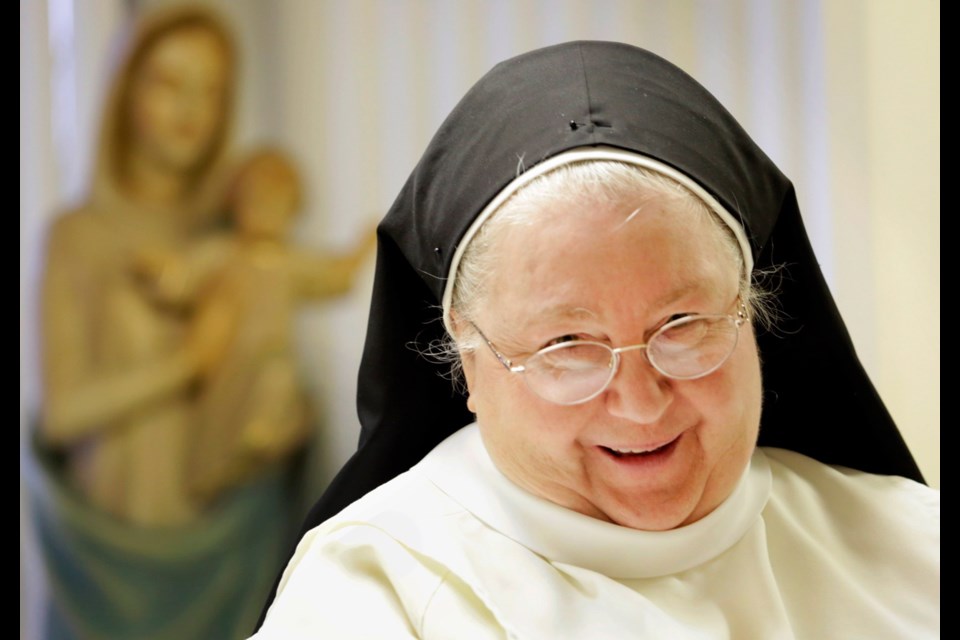DETROIT — At the Monastery of the Blessed Sacrament, 32 cloistered Dominican sisters pray around the clock. Each hour finds at least one of them in silent prayer in the chapel.
Recently, they were praying for a new pope, and for the 115 cardinals gathered to select the 266th Catholic pontiff at the conclave in Rome.
They were “amused by all the predictions,” said Sister Mary Thomas, 73, who entered the Farmington Hills, Michigan, monastery after she graduated from Pershing High School in Detroit at age 18.
They put their faith in the Holy Spirit, she said, to ensure Catholics would “get the pontiff we need for now.”
These sisters have limited access to the outside world.
They find out most of their news from benefactors, who call the front desk to leave news updates for them. The nuns rarely turn on the TV and have no cable access. They have limited access to the Internet.
“We’re what they call low-tech,” joked Sister Mary of the Sacred Heart, 71, a Texas native. “We don’t Twitter or tweet. We may squeak and squirm, though.”
The Dominican sisters range in age from 25 to 91. They accept women from the ages of 21 to 40. Among them are women from the U.S. and those born in foreign countries, including Nigeria, Kenya and Vietnam.
Several cloistered Dominican sisters talked about their lives earlier this month, from behind a parlor counter that signifies their separation from the outside world. It was a rare opportunity for the nuns to display conviviality and humour outside the two separate hours of recreation time they get each day.
The sisters gather seven times a day, beginning at 5:30 a.m. and ending at 8 p.m., as a community to pray.
Their 7:15 a.m. mass is open to the public, with a golden metal grating separating mass-goers from the nuns.
The Dominicans have face-to-face visits with friends a few times a year — and visits from parents on a near-monthly basis.
Decades ago, these sisters talked to visitors through heavy metal grates that obscured them from view. Doctors would come to the cloister to treat ill nuns, but now the sisters can be driven to doctor appointments.
The life of a cloistered nun offers a glimpse into the life that Pope Emeritus Benedict XVI has chosen for himself in retirement. It’s what the church calls a contemplative life devoted to prayer and isolated from social activity.
When Benedict resigned Feb. 28, he said he was removing himself from public life to “devotedly serve the holy church of God in the future through a life dedicated to prayer.”
Benedict is temporarily residing at Castel Gandolfo, not far from Rome, where popes have traditionally vacationed. He intends to live in a previously cloistered monastery in the Vatican Gardens.
Benedict’s choice “put a focus on our life,” said Sister Mary Rose, 84, a nurse-practitioner from Hamtramck, Michigan, who once ran and lost a Democratic primary for the Michigan House.
Benedict, she said, is saying “he will be more useful to the church through prayer. And many people don’t know the power of prayer.”
“We live a hidden life,” Sister Mary Rose said. “Many don’t know we exist here in Detroit.”
Last month, cloistered convents and monasteries worldwide received a special letter from the Vatican dated Feb. 26 asking them to pray for the papal transition.
“The coming conclave will thus depend in a special way on the transparent purity of your prayer and worship,” wrote Cardinal Tarcisio Bertone, a Vatican official.
Those in training to become cloistered nuns are marked by white veils. When they take their finals vows, they will receive a black veil.
Sister Maria of Jesus, who was born in Nigeria and received a doctorate in education from Michigan State University, will receive her black veil May 4.
“Look for the white smoke when that happens,” the 47-year-old nun joked.



